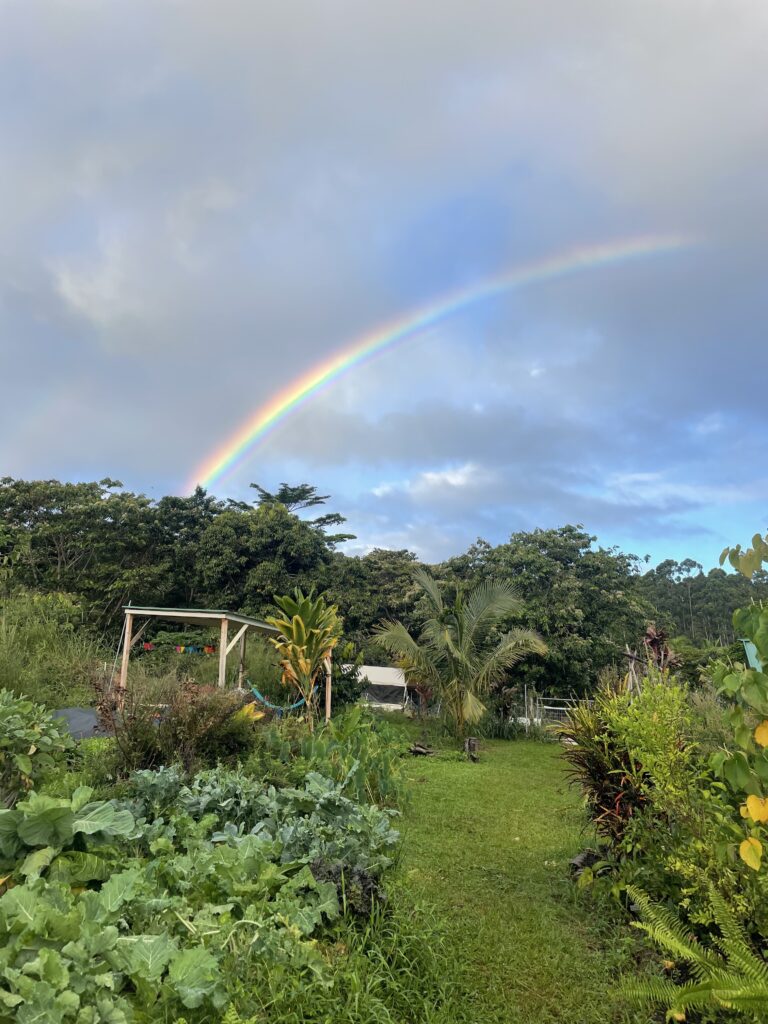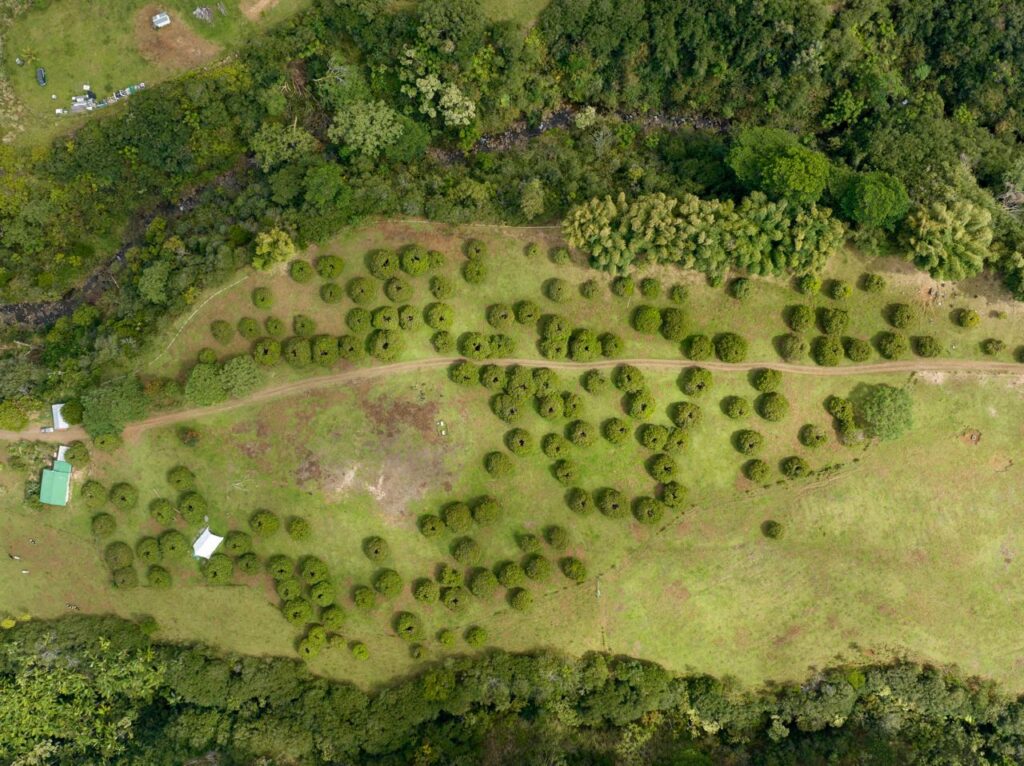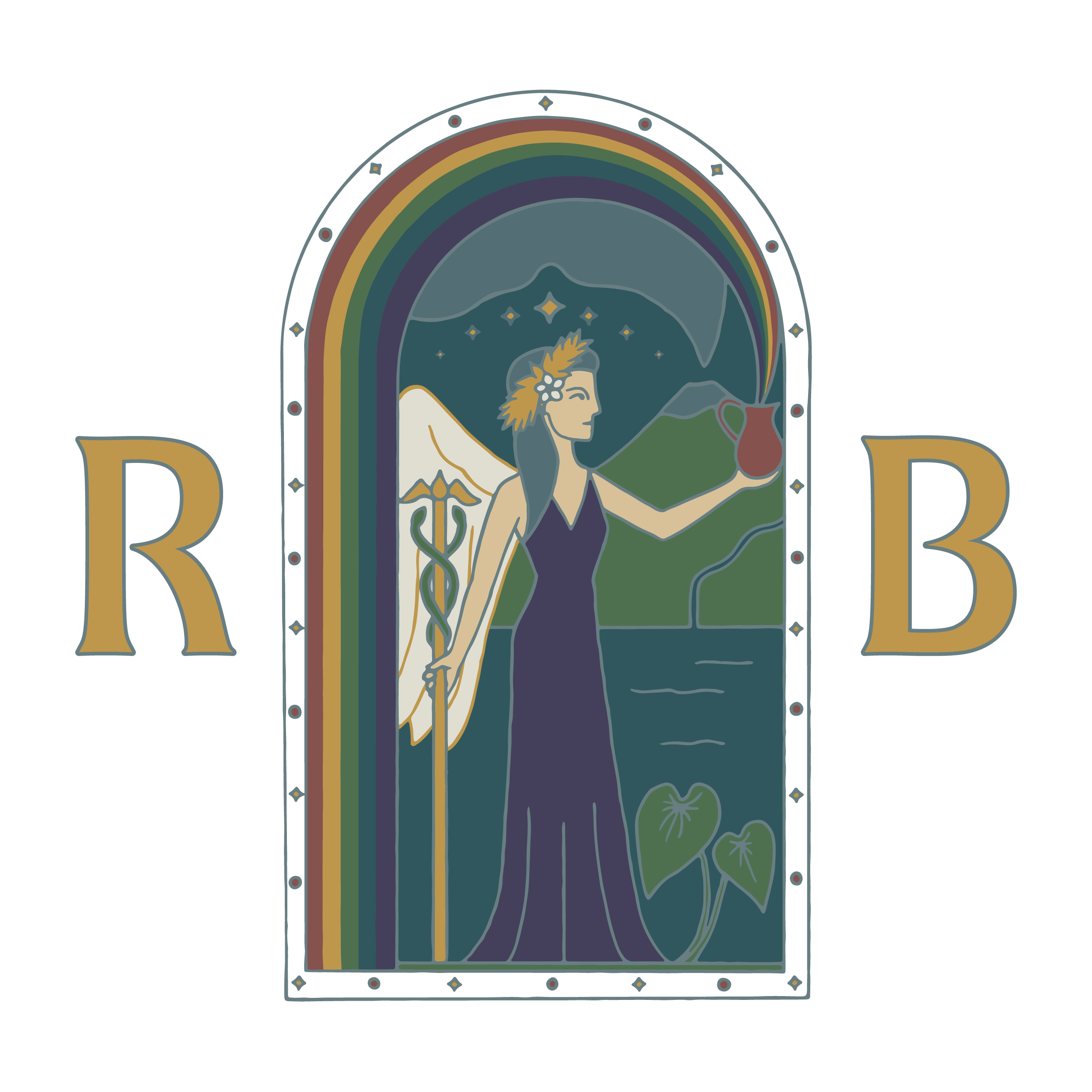Rainbow Bridge exists on a tract of land resembling the traditional land subdivision called an Ahupua’a. It extends from the Hawaii belt road a mile up the mountain and is bordered by the Manoloa and Poupou streams. Land was originally divided in this way to ensure each community had access to a full cross section of island resources.
Our desire as community is to connect deeply to this place, feed ourselves, and be good stewards of the land. The geologic and climatic diversity here lends itself toward the diverse and integrated systems we are developing. You can read about some of them below.
Late Spring 2020 there was a big push to grow more food on the land and the “Main Garden” was fenced in and developed. It has been a beautiful and ever evolving container where we learn to nurture abundance in alignment with the capabilities of the plants and constraints of the environment. We grow an abundance of calories from staples such as kalo and cassava, and a myriad of tropical “spinach” species supply our greens. We also grow beans, cole crops, pepper, tomato, eggplant, and many other more temperate and mainland crops. Our food production is currently about feeding our community first, but a goal in the future is to fence a larger area so we can share abundance with our greater island community. We hold volunteer community garden days every Wednesday so check out the opportunities to connect with us on the land.


The wet tropics are the most diverse ecosystems on the planet, and what better way to grow back into relationship with the myriad of other beings than to nurture them into their fullest potential and receive their gifts. The “food forest” is a Permaculture concept that focuses on aligning and designing with nature in order to minimize maintenance while maximizing productivity (The goal being a stable system that can be left untended for some time and maintain productivity). This means that, like a forest, trees are the dominant species acting not just as the crop, but also as the weed deterrent, mulch, and fertilizer. Because the system is a forest, the main tool of maintenance is the chainsaw. Our property is blessed with an abundance of old established food trees and our new plantings are nurtured by the abundant biomass this climate creates.
“The best time to plant a tree is 30 years ago. The second best time is today.”
Our lychee orchard consists of nearly 200 mature lychee trees that were planted in 1998 by Grigor and his community. They are a powerful lesson in abundance, yeilding thousands of pounds of fruit each day for much of May and June. They teach us of the discipline required to prune, fertilize, and care for such a large commercial endeavor, and they also teach us of community and connection by bringing us into relationship with those that come in to help harvest and those that eat our fruit on Big Island and Oahu.

“We abuse land because we see it as a commodity belonging to us. When we see land as a community to which we belong, we may begin to use it with love and respect.”
— Aldo Leopald
Do you have questions about contribution? Internships? Business inquiries? Fill out the form and we will get back to you as soon as we can!
